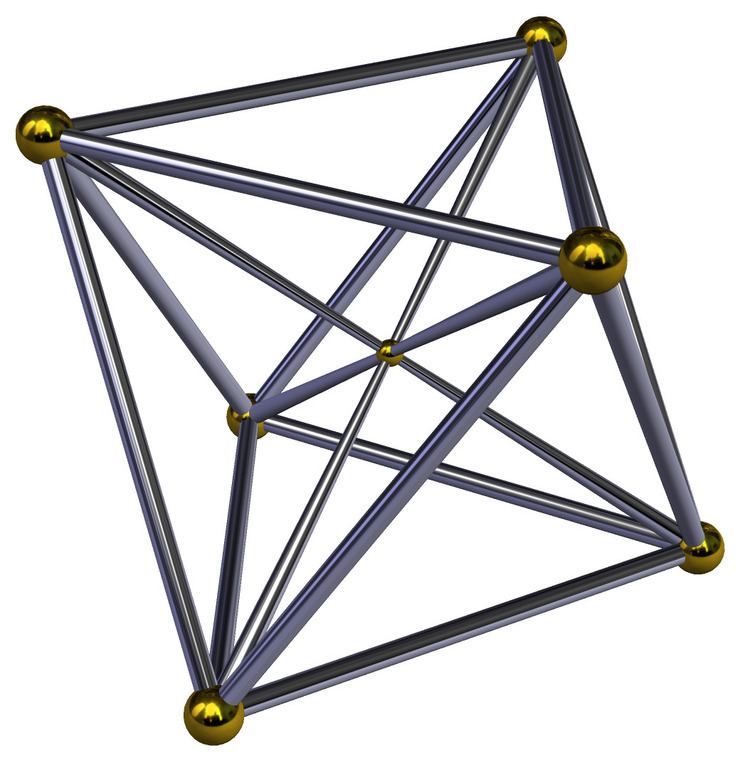 | ||
In 4-dimensional geometry, the octahedral pyramid is bounded by one octahedron on the base and 8 triangular pyramid cells which meet at the apex. Since an octahedron has a circumradius divided by edge length less than one, the triangular pyramids can be made with regular faces (as regular tetrahedrons) by computing the appropriate height.
Contents
Occurrences of the octahedral pyramid
The regular 16-cell has octahedral pyramids around every vertex, with the octahedron passing through the center of the 16-cell.
The octahedral pyramid is the vertex figure for a truncated 5-orthoplex, .
The graph of the octahedral pyramid is the only possible minimal counterexample to Negami's conjecture, that the connected graphs with planar covers are themselves projective-planar.
Other polytopes
The dual to the octahedral pyramid is a cubic pyramid, seen as an cubic base, and 6 square pyramids meeting at an apex.
Square-pyramidal pyramid
The square-pyramidal pyramid, ( ) ∨ [( ) ∨ {4}], is a bisected octahedral pyramid. It has a square pyramid base, and 4 tetrahedrons along with another one more square pyramid meeting at the apex. It can also be seen in an edge-centered projection as a square bipyramid with four tetrahedra wrapped around the common edge. If the height of the two apexes are the same, it can be given a higher symmetry name [( ) ∨ ( )] ∨ {4} = { } ∨ {4}, joining an edge to a perpendicular square.
The square-pyramidal pyramid can be distorted into a rectangular-pyramidal pyramid, { } ∨ [{ } × { }] or a rhombic-pyramidal pyramid, { } ∨ [{ } + { }], or other lower symmetry forms.
The square-pyramidal pyramid exists as a vertex figure in uniform polytopes of the form , including the bitruncated 5-orthoplex and bitruncated tesseractic honeycomb.
